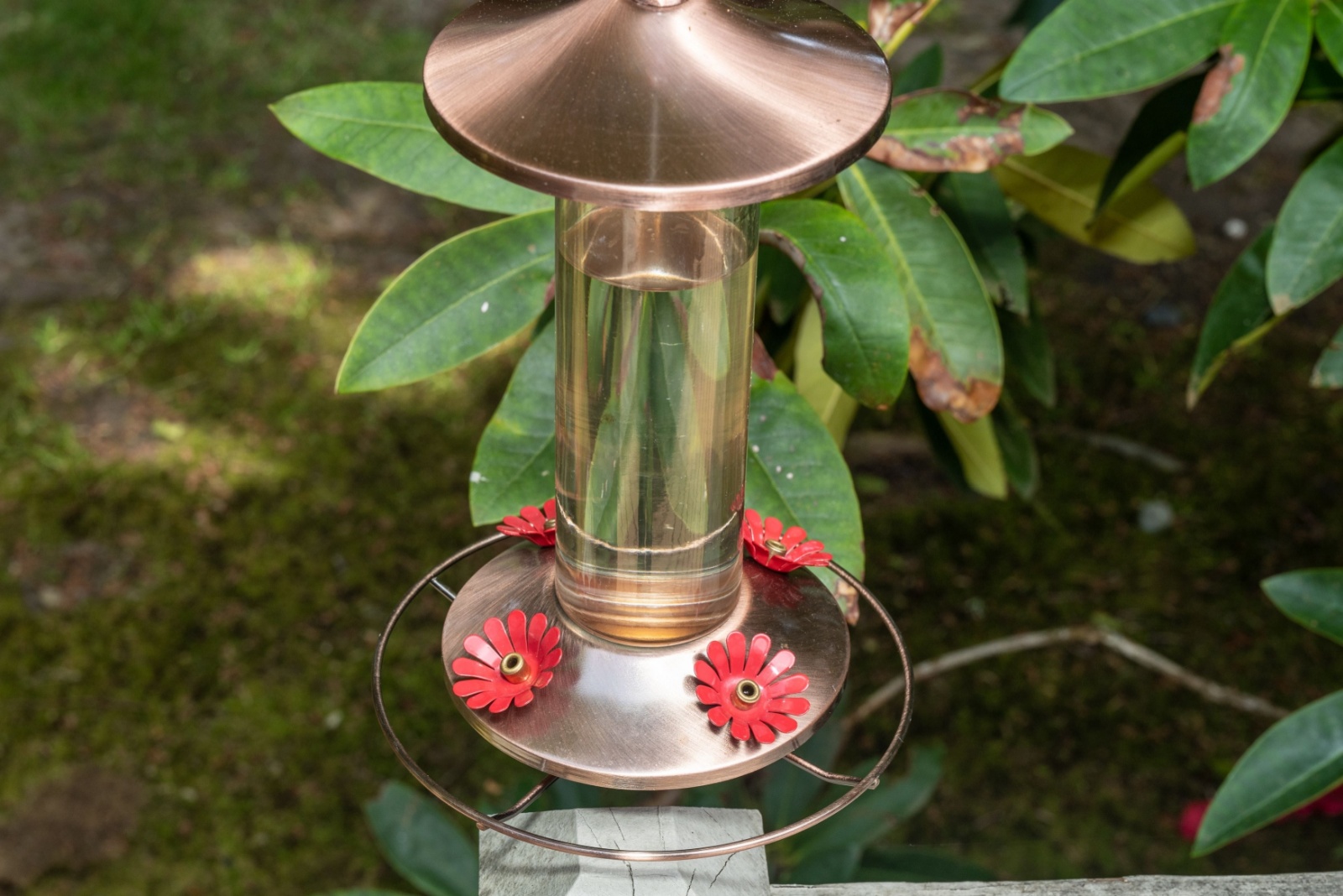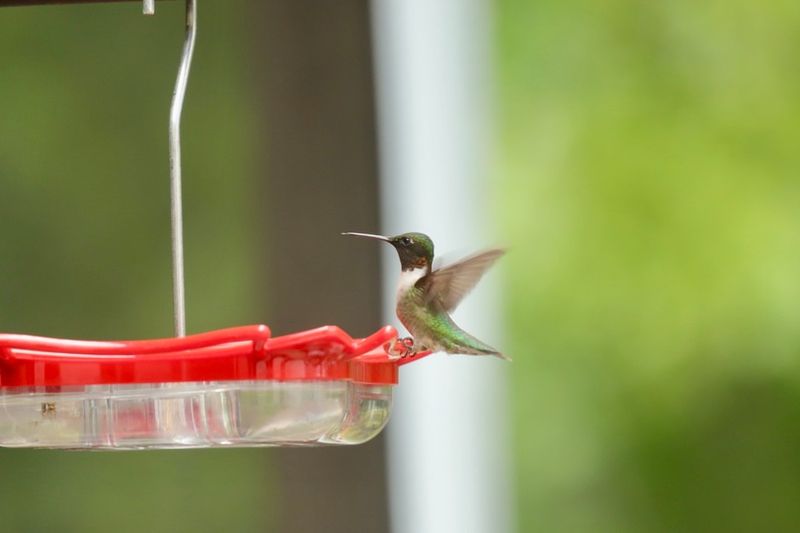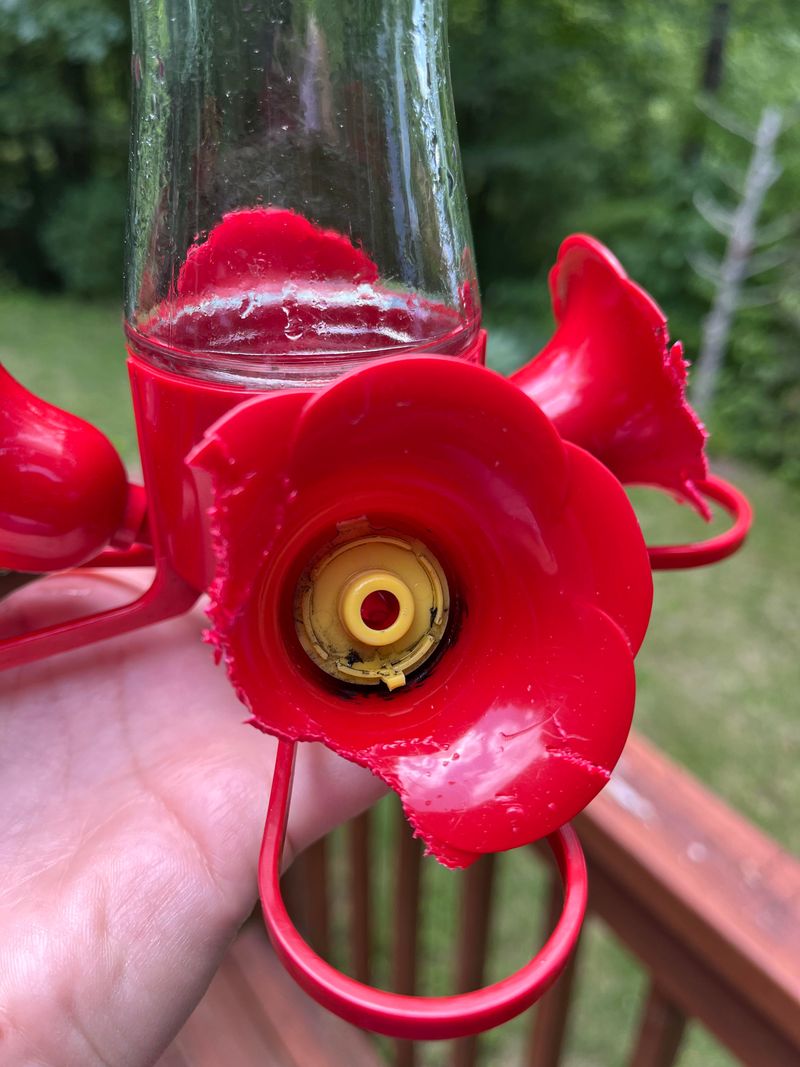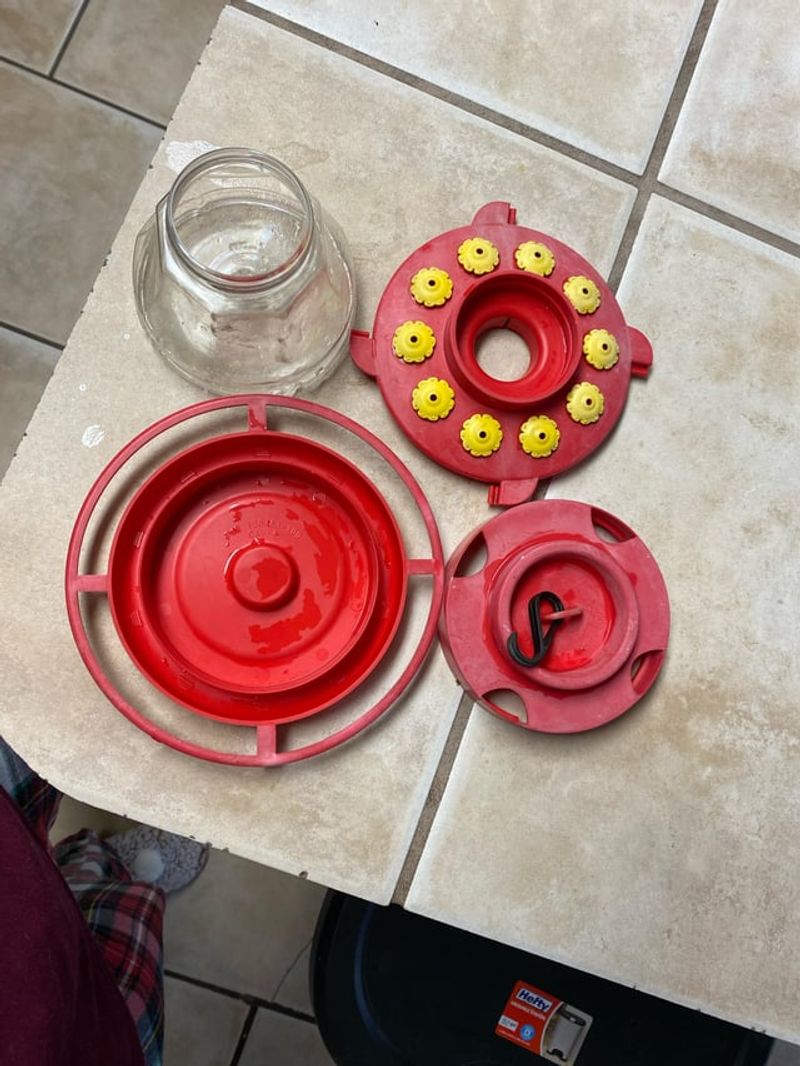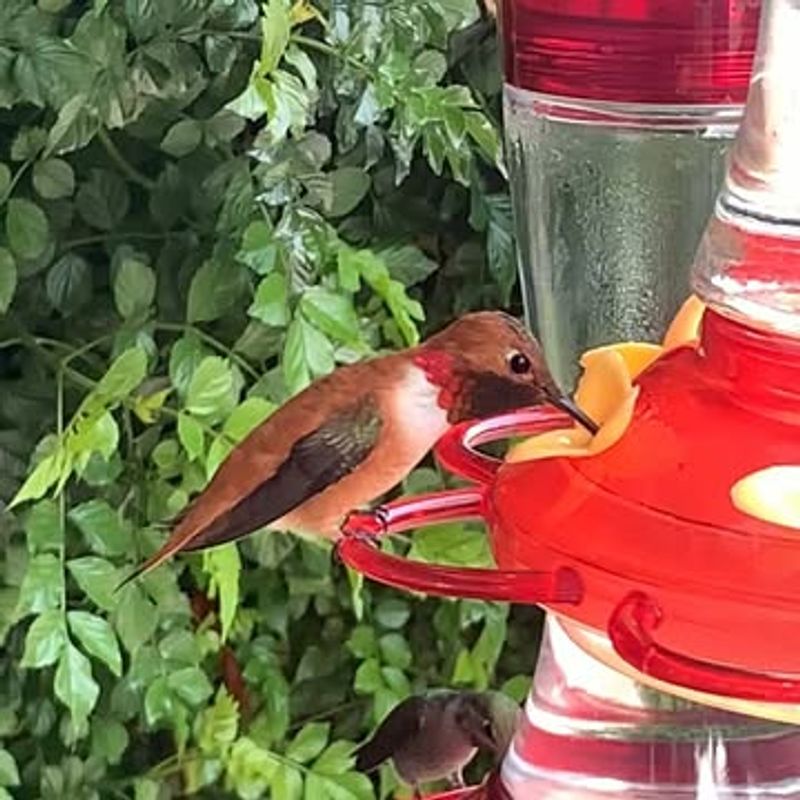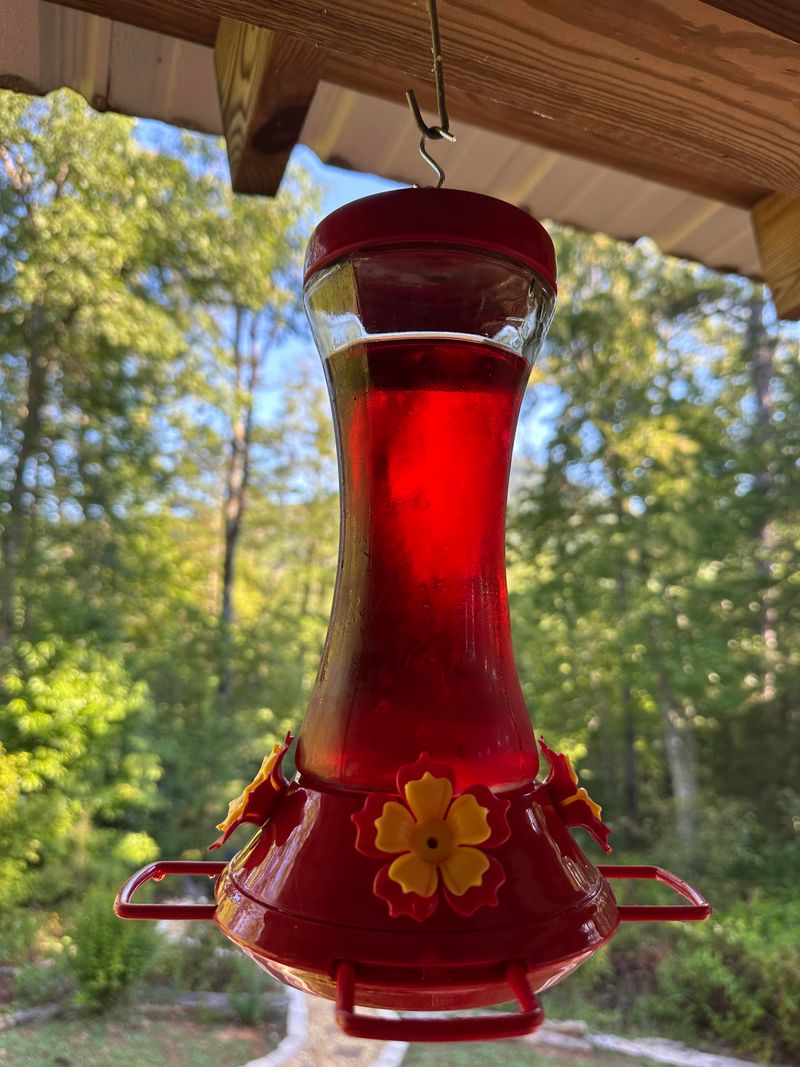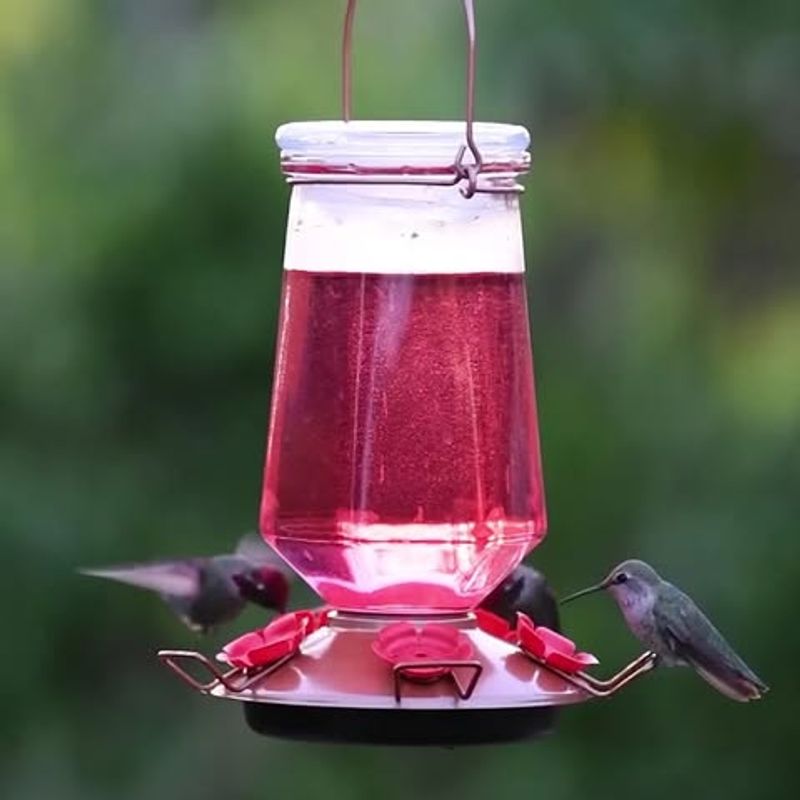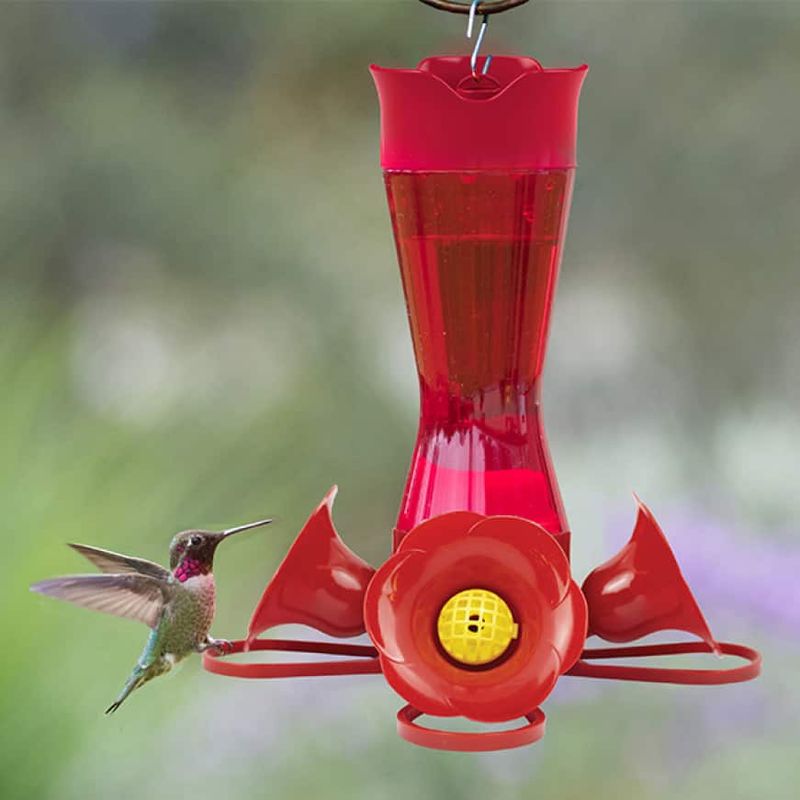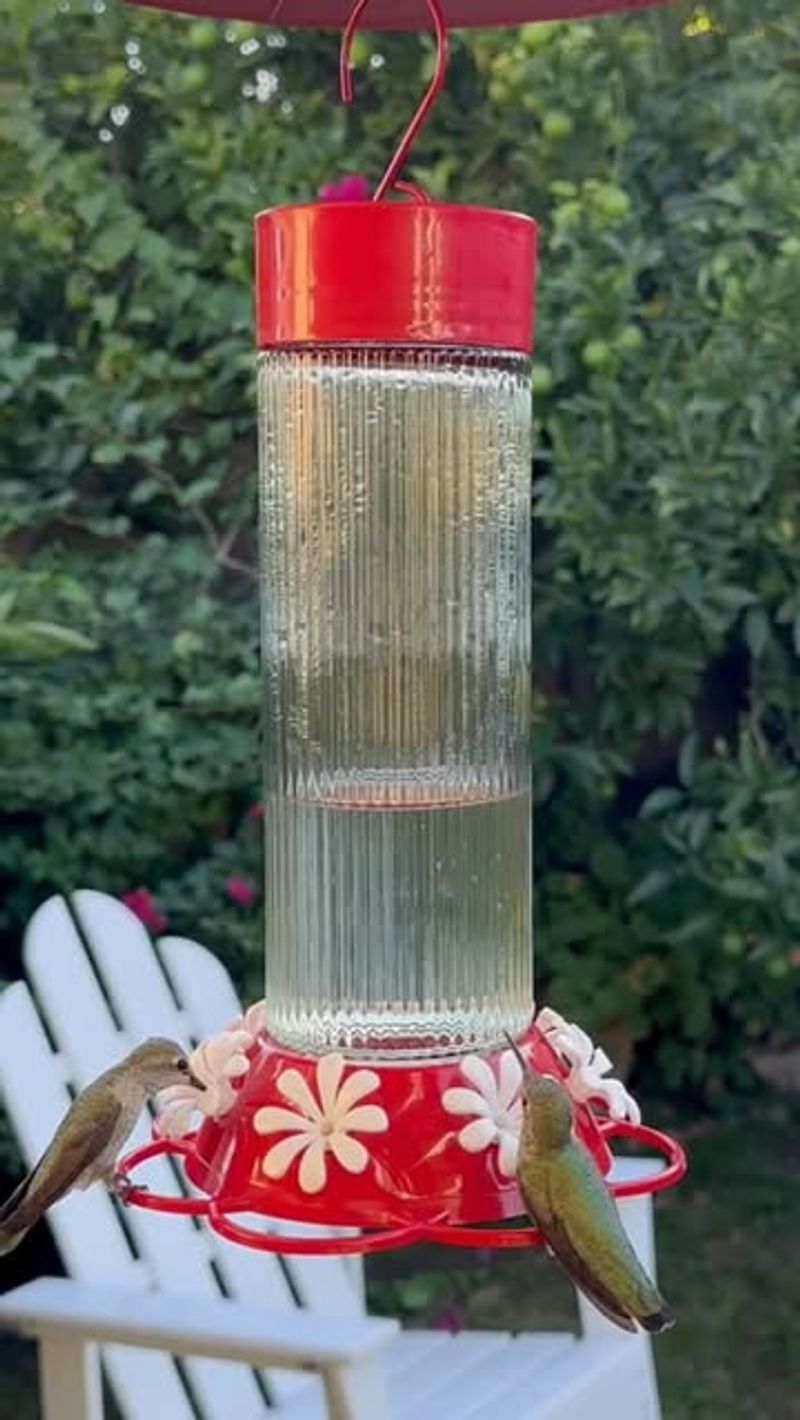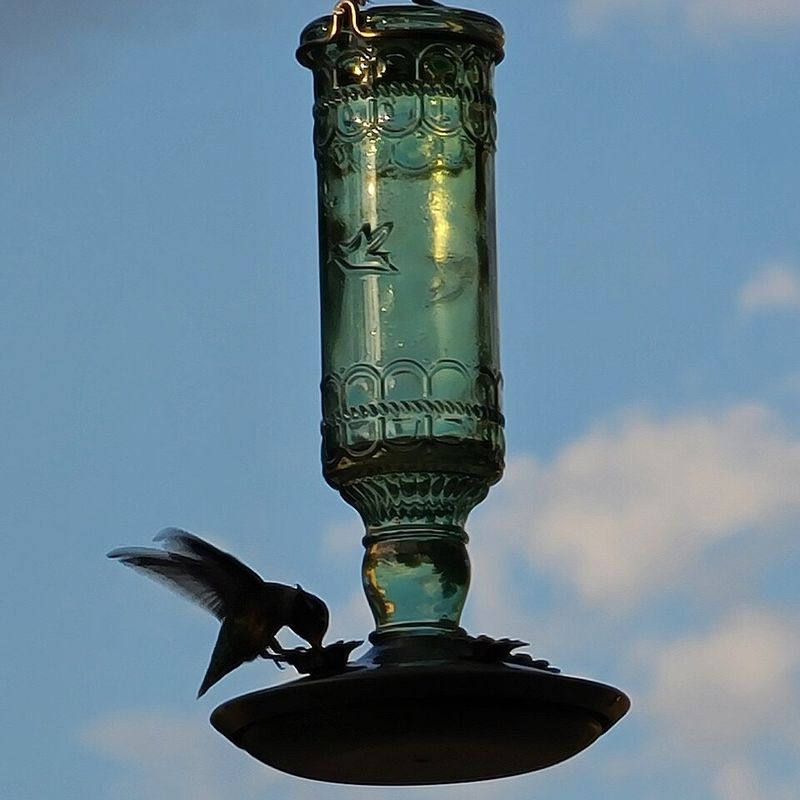Keeping your hummingbird feeders clean is the secret to attracting these dazzling aerial acrobats to your North Carolina yard. Ruby-throated hummingbirds visit our state from April through October, and they remember which feeders offer the freshest nectar.
Clean feeders not only attract more birds but also protect these tiny visitors from harmful mold and bacteria.
1. Rinse With Hot Water Daily
A quick daily rinse with hot tap water prevents sugar buildup that can turn to mold. Simply empty any remaining nectar, fill the feeder with hot water, and swish it around.
This simple habit takes just a minute but makes a huge difference. Ruby-throated hummingbirds, North Carolina’s most common species, are particularly attracted to clean feeding stations.
2. Deep Clean Weekly With Vinegar
Mix one part white vinegar with four parts water for a natural, bird-safe cleaning solution. Soak your dismantled feeder for an hour, then scrub gently with a bottle brush to reach those tricky corners.
Vinegar dissolves mineral deposits and kills mold without leaving harmful residues. After cleaning, rinse thoroughly with clean water until all vinegar smell disappears.
3. Avoid Dish Soap When Possible
Commercial dish soaps can leave residues that might harm hummingbirds or alter the nectar taste. If you must use soap, choose fragrance-free varieties and rinse at least three times with clean water.
Many experienced North Carolina hummingbird enthusiasts skip soap entirely. Natural cleaners like vinegar or baking soda provide effective cleaning without potentially harmful residues.
4. Scrub Feeding Ports With Old Toothbrush
Feeding ports develop sticky residue and sometimes mold where tiny hummingbird tongues lap up nectar. Grab an old soft-bristled toothbrush dedicated to feeder cleaning for this delicate job.
Gently scrub each port and the surrounding area where sugar crystallizes. Pay special attention to the little red plastic flowers that often hide buildup. Clean ports prevent the spread of diseases between visiting birds.
5. Use Bottle Brushes For Narrow Necks
Bottle brushes reach deep into those hard-to-clean necks and reservoirs where mold loves to hide. Invest in a set of different-sized brushes specifically for your feeders.
Long, flexible brushes can navigate curves and corners where your fingers can’t reach. Black mold especially thrives in warm North Carolina summers, making thorough cleaning essential for hummingbird health.
6. Soak Stubborn Stains With Hydrogen Peroxide
For those persistent black mold spots that vinegar won’t touch, try a soak in 3% hydrogen peroxide. Fill your disassembled feeder with peroxide and let it bubble away at stains for 10-15 minutes.
The bubbling action helps lift stubborn residue without scrubbing. After soaking, rinse thoroughly with clean water until all peroxide is removed. This method is especially useful during humid North Carolina summers.
7. Sanitize Monthly With Bleach Solution
Once a month, sanitize your feeder with a very diluted bleach solution – one teaspoon of bleach to one gallon of water. Soak for just 10 minutes, no longer.
The mild bleach solution kills harmful bacteria and fungal spores that regular cleaning might miss. Rinse thoroughly at least five times afterward until all bleach smell disappears. This deep cleaning helps prevent the spread of diseases among North Carolina’s hummingbird population.
8. Dry Feeders Completely Before Refilling
Moisture trapped inside feeders becomes a breeding ground for mold. After cleaning, turn feeders upside down on a clean towel and allow them to air dry completely before adding fresh nectar.
In North Carolina’s humidity, drying might take several hours. Using a dedicated drying rack keeps parts organized. Patience with proper drying prevents frustrating mold problems that drive hummingbirds away from your yard.
9. Maintain Cleaning Tools Separately
Dedicate specific brushes, sponges, and towels exclusively for feeder cleaning. Store these tools separately from kitchen items to prevent cross-contamination.
Hanging your feeder brushes allows them to dry completely between uses. Many North Carolina hummingbird enthusiasts keep a special bucket with their feeder cleaning supplies ready to go, making the process quick and convenient during busy summer months.
10. Replace Sun-Damaged Feeders
Even with perfect cleaning, plastic feeders eventually become cloudy and cracked from sun exposure. Inspect your feeders regularly and replace them when plastic turns cloudy or develops rough edges.
Sun-damaged plastic creates tiny crevices where bacteria hide, impossible to clean completely. Many North Carolina hummingbird lovers prefer glass feeders which resist sun damage and last longer in our intense southern sunshine.

